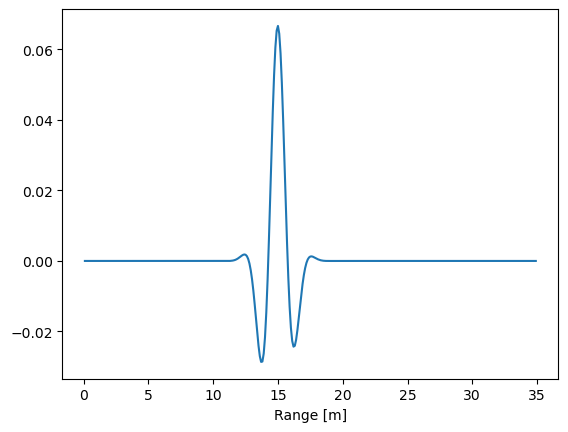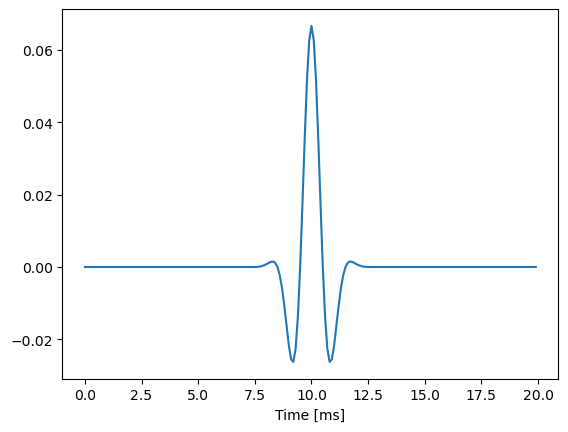BLM_2: Wave propagation#
Waves are the consequence of forcefully displacing some particles (gas/water/atoms) from the equilibrium state. the resulting propagating wave is mathematically described by the wave equation.
Equation of motion of forcefully displaced particles#
To derive the wave equation one needs three different physical laws and equations.
Newton’ law of motion:#
Newton: “a change in motion is proportional to the motive force impressed and takes place along a stright line in which the force is impressed”
In mathematical terms
where \(m\) is the particle mass that is considered constant and \(u\) is the velocity of the particles
Restoring force of pressure gradient:#
If a (spherical) particle volume is forefully changed by external pressure then the restoring force is proportional to the radial pressure variation
where \(V=m\rho\) is the (spherical) volume of the particles and \(r\) is measured along the radial dimension of the spherical volume.
Equation of continuity:#
Relative changes in particle densities is compensated by a velocity gradient and for spherical symetric motion (pulsing sphere) we get
Wave equation#
Combining all three equations one can obtain the wave equation that is the mathematical description of propagating waves and disturbances
The solution of this equation is any function of the form
This can easily be verified by the second derivatives with respect to time \(t\) and range \(r\). The form of the solution \(f(ct \pm r)\) is an indication that the time evolution of waves is directly related with spatial distribution of the waves.
Direction of propagation#
The solution to the spherical wave equation contains as argument \((ct \pm r)\) which means that for any solution we have two cases
\((ct - r)\) that is, for increasing time \(t\) the range \(r\) is increasing (wave is outgoing, diverging from origin)
\((ct + r)\) that is, for increasing time \(t\) the range \(r\) is decreasing (wave is incomming, converging to origin)
Example: Gaussian pulse#
Define a Pulse
where the amplitude function \(A(ct-k)\) is given by a Gaussian shape
and the “wavenumber” \(k\) is defined as
and therefore
In the following examples we consider two cases observing a acoustic wave
time snap shot after 10 ms
time series at 15 m distance from origin
import numpy as np
import matplotlib.pyplot as plt
#
c=1500 # m/s
Po=1
sigma=1 # m
lam=3 # m
def Pulse(c,t,r,sigma,lam):
return 1/r*np.exp(-1/2*((c*t-r)/sigma)**2)*np.cos(2*np.pi/lam*(c*t-r))
#=== case 1 ===
r=np.arange(0.1,35,0.1) # m
t=0.01 # s time of snaphot
x1=Po*Pulse(c,t,r,sigma,lam)
print(np.shape(r),np.shape(x1))
#
plt.plot(r,x1)
plt.xlabel("Range [m]")
plt.show()
#=== case 2 ===
r=15 # m fixed distance
t=np.arange(0,0.02,0.1e-3); # s
x2=Po*Pulse(c,t,r,sigma,lam)
print(np.shape(t),np.shape(x2))
#
plt.plot(t*1000,x2)
plt.xlabel("Time [ms]")
plt.show()
(349,) (349,)

(200,) (200,)

Observations#
The resulting measurements (case 1) and (case 2) show more or less the same wave form. Only difference is that the time snap shot, which measures the wave at different ranges is effected by the attenutation due to geometric speading, while measurements at a fixed range will experience always the same attenuation.